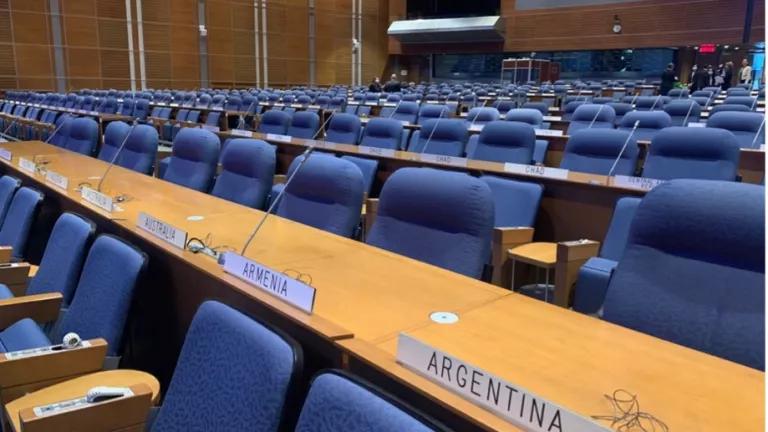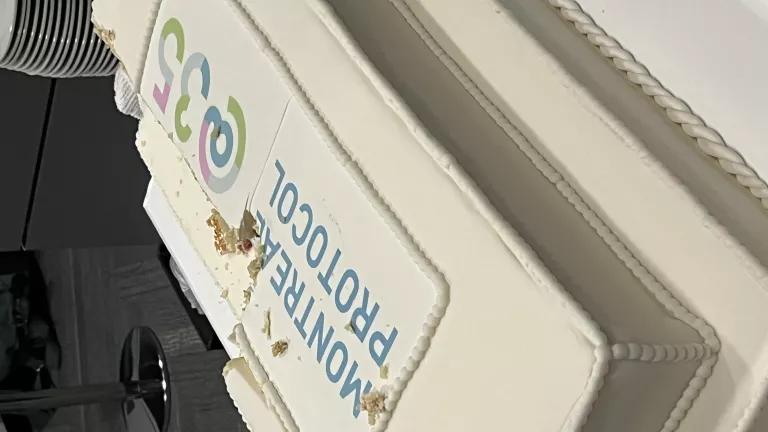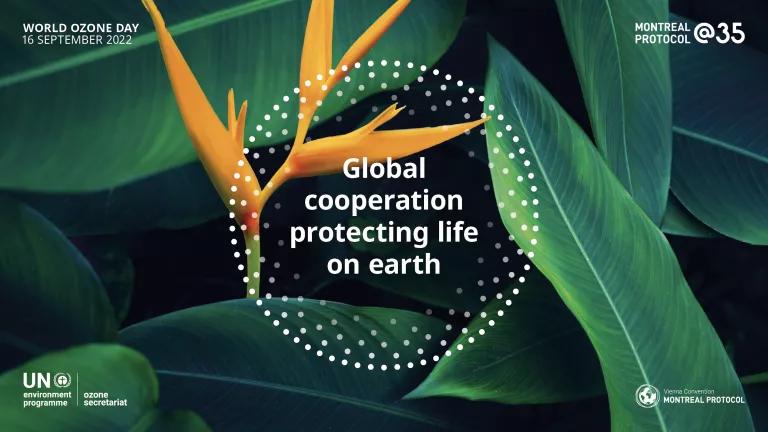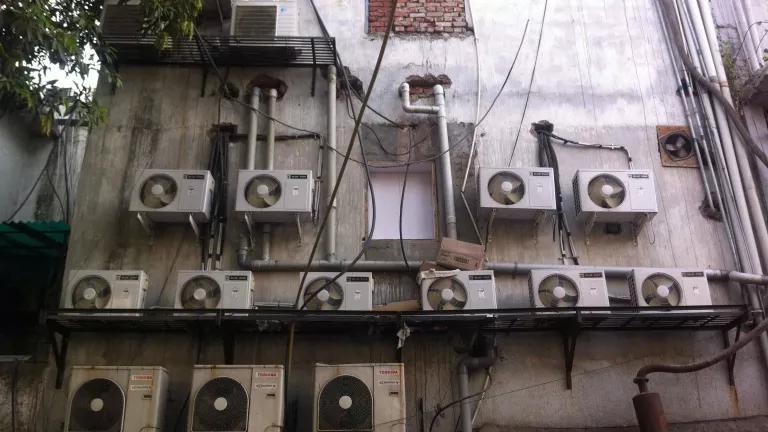
Parties will meet between October 31-November 4 at the International Civil Aviation (ICAO) headquarters in Montreal.
President Biden signed the ratification papers of the Kigali Amendment to the Montreal Protocol this week, making the U.S. the 140th party to the Kigali HFC phasedown treaty, as parties prepare to meet in person in the treaty’s birthplace next week in Montreal. Countries at this year’s Meeting of the Parties will discuss a backlog of issues that had remained in the backburner during the pandemic. Many of the agenda items this year focus on the treaty’s organizational nuts and bolts and aim to put the treaty back on track after more than 2 years of remote negotiations.
What’s on the MOP34 agenda
Top of the list is replenishment of the Multilateral Fund (MLF) for 2024-2026. The MLF is the treaty’s funding mechanism by which money donated by developed countries is distributed to developing countries for projects aimed at achieving compliance with the Protocol’s obligations. Though the parties will not be making any direct funding decisions this year, they will be deciding on the terms of a study to determine the necessary funds and establish guidelines for the next replenishment period (2024-2026). Here, there’s an opportunity to incorporate cost guidelines for projects that promote energy efficiency in addition to the HFC transition. The timing for new replenishment guidelines is ripe since several A5 parties (i.e., developing countries) will be commencing the phasedown process in 2024 and will be looking to the MLF to aid with compliance costs.
The parties will also be discussing gaps in atmospheric monitoring of regulated substances. A few years ago, scientists uncovered what was likely a breach of the treaty’s requirements when emissions of a banned ozone-depleting chemical (CFC-11) unexpectedly started rising (we’ve written extensively about this here and here). The issue has since been resolved, but it triggered a broader discussion about the Protocol’s ability to detect discrepancies in atmospheric emissions and the geographic coverage of monitoring stations. In this meeting, we expect parties to focus on ongoing emissions of carbon tetrachloride (CTC), a common feedstock to produce HFCs and other chemicals, as well as by-product of chlorine production. Once released into the atmosphere CTC impacts both the ozone layer and the climate. CTC is regulated and reported under the Montreal Protocol but despite reporting and controls, CTC emissions in the atmosphere have for years been consistently higher than the reporting suggests. The parties will be discussing two closely related proposals: an EU proposal requesting TEAP to look into chemical processes that may lead to CTC or other emissions, and a proposal by Switzerland which encourages voluntary reporting of relevant information on industrial production and potential emissions sources of CTC.
There is also an ongoing conversation on strengthening institutional processes to help implement and enforce the Protocol’s requirements more effectively. Parties will be considering possible ways to prevent and combat illegal trade of regulated substances, data reporting, and information sharing. The U.S. is co-chairing this discussion and has a lot to offer based on the Environmental Protection Agency’s (EPA) short but effective track record enforcing the phasedown and tackling illegal trade. In 2021, EPA and the Department of Homeland Security joined forces under the Interagency Task Force on Illegal Hydrofluorocarbon (HFC) Trade to prevent illegal trade and enforce the import requirements of the HFC phasedown under the American Innovation and Manufacturing (AIM) Act. The task force has seized HFC imports equivalent to 889,000 tons of CO2e in illegal shipments so far this year.
Lastly, parties will consider a proposal to restructure one of the Protocol’s technical bodies to better support the HFC phasedown and address future challenges. Since 1988, the Montreal Protocol has relied on the technical and scientific expertise of three panels to make informed policy decisions – the Scientific Assessment Panel (SAP), the Technology and Economic Assessment Panel (TEAP), and the Environmental Effects Assessment Panel (EEAP). This year parties will be discussing potential restructuring of TEAP’s working groups (officially called technical options committees or TOCs) to focus on relevant issue areas like cold chains and building & indoor climate control.
There will also be continued discussions on how to operationalize energy efficiency during the HFC phasedown, as well as issues related to dumping of inefficient, obsolete appliances raised by a group of African states. Parties may request more information of TEAP or the Ozone Secretariat about energy efficiency while phasing down HFCs, or may urge countries to promote energy efficiency as they begin planning their HFC phasedowns.
Side-events turn the spotlight on emerging opportunities
In addition to the topics on the official agenda, NGOs, governments and others have organized side-events on a suite of topic areas relevant to the Protocol. This year, NRDC is hosting two side events.
NRDC is co-hosting a side-event with EIA and IGSD (November 1, 1-3pm ET) on the challenges and opportunities that lie in leak reductions and increased refrigerant recovery. NRDC’s Alex Hillbrand will be speaking about the immense climate opportunity of refrigerant management outlined in our recent joint report The 90 Billion Ton Opportunity: Lifecycle Refrigerant Management, alongside a diverse panel of government and industry experts including Cindy Newberg from the U.S. EPA, Leslie Smith from Grenada’s National Ozone Unit, Ken Logan from A-Gas (a refrigerant reclaimer), and Marco Gonzalez, the former Executive Secretary of the Montreal Protocol. The discussion will be moderated by Avipsa Mahapatra from EIA. The event will be one of four this year to highlight refrigerant management.
NRDC’s India team is hosting a side event in partnership with The Energy and Resources Institute (TERI) on ‘Mainstreaming HFC Transitions in Ensuring Access to Cooling in India’ ( November 2, 1-3pm ET). India has played a key role in bringing about the success of the Montreal Protocol and its Amendments. Last year in September, in a big boost for the future of climate friendly cooling, India ratified the Kigali Amendment and is now starting to chart a way forward aligned with the implementation of its national cooling action plan. As it goes ahead on this path, it is important to think through some of the challenges that will emerge for the cooling sector to mainstream low GWP refrigerants and build solutions ahead of time. At the side event, NRDC experts along with representatives from the Indian government, industry, and civil society will discuss options of policies, business models, training and capacity building programs and access to finance solutions to facilitate a smooth transition to low GWP refrigerants and energy efficient cooling equipment to promote climate friendly cooling in India. A new research paper by NRDC and colleagues on pathways for Kigali Amendment implementation in India will be presented at the event.
More on NRDC and other side events at the meeting next week can be found here.
We’re gearing up for a week of discussions, negotiations, and decisions in Montreal on all these issues and more. Stay tuned!







